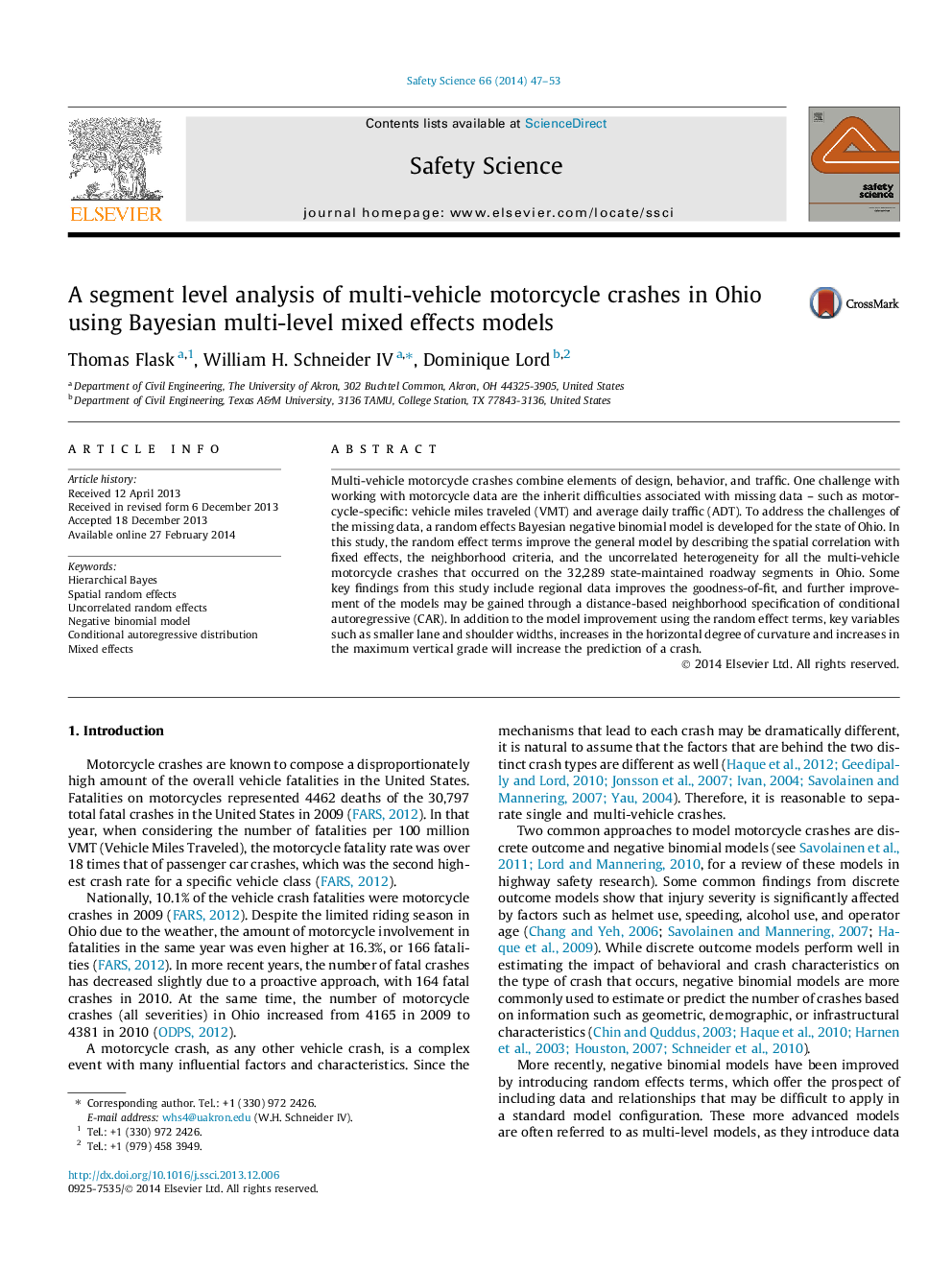| Article ID | Journal | Published Year | Pages | File Type |
|---|---|---|---|---|
| 589090 | Safety Science | 2014 | 7 Pages |
•First motorcycle specific model to use random effect terms.•In general, the inclusion of random effects reduced the standard deviation of the parameters.•Smaller lane and shoulder widths will increase the prediction of a crash.•Increases in degree of curvature and the maximum vertical grade will increase the prediction of a crash.
Multi-vehicle motorcycle crashes combine elements of design, behavior, and traffic. One challenge with working with motorcycle data are the inherit difficulties associated with missing data – such as motorcycle-specific: vehicle miles traveled (VMT) and average daily traffic (ADT). To address the challenges of the missing data, a random effects Bayesian negative binomial model is developed for the state of Ohio. In this study, the random effect terms improve the general model by describing the spatial correlation with fixed effects, the neighborhood criteria, and the uncorrelated heterogeneity for all the multi-vehicle motorcycle crashes that occurred on the 32,289 state-maintained roadway segments in Ohio. Some key findings from this study include regional data improves the goodness-of-fit, and further improvement of the models may be gained through a distance-based neighborhood specification of conditional autoregressive (CAR). In addition to the model improvement using the random effect terms, key variables such as smaller lane and shoulder widths, increases in the horizontal degree of curvature and increases in the maximum vertical grade will increase the prediction of a crash.
